Rural Rajasthan’s water crisis is real. Believe me there are people who are only drinking a litre of water everyday. Barely managing their water needs amidst the face of crisis is the only option for some families of rural Rajasthan. I was on the outskirts of Jaipur with my field team exploring villages where Tarun Bharat Sangh operates and functions towards solving issues of extreme water crises along with the help of people facing the issues.
There I met the husband of Manbhar Devi. One doesn’t go and start asking a ton of questions and trouble people who are already living in distress. But my curiosity got the better of me. When I talked to him he explained that someone with access to clean drinking water for most of their life may get sick after taking a sip of the water that the rural Rajasthan’s inhabitants for the past 30 years have been forced to use.
The water crisis here is not a new problem and a lot of scientific research has also taken place quantifying the amount of water contamination, groundwater levels and the reasons for its depletion. These families living in the regions of rural Rajasthan on the outskirts of the capital city of Rajasthan, Jaipur have been facing water scarcity and contamination problems for a very long time now.
The Silent Struggle: Field Notes From A Crisis
People living in villages under Kalwada, Bhamboriya and Nevta Panchayats, part of Saganer Tehsil of Jaipur, have been grappling with water scarcity for decades. They have adjusted their lives to the problems stemming from malpractices and dyeing industries, which have contributed to the present conditions. It is not just the local water sources which are heavily contaminated but the groundwater also has high fluoride concentration. In a research paper published in 2023, a maximum of 37 mg/l of fluoride concentration was reported in the groundwater in rural areas across Rajasthan1. Concentration of fluoride beyond 1.5 mg/L by either geogenic or anthropogenic means has been classified as fluoride pollution of groundwater (Shekhar, 2017).2
This article aims to focus on the stories of resilience of the people living in these areas. After spending almost a month with these communities one begins to realise the importance of decentralised solutions they have devised.
Battling Contamination: Impact On Health And Livelihood
The water crisis has impeded agricultural development in rural Rajasthan and the consumption of contaminated water for a long time has affected health, livelihood, family dynamics and everything else that revolves around it. The social fabric is tainted. There is a lot of frustration in the communities which directly stems from the issues around water.
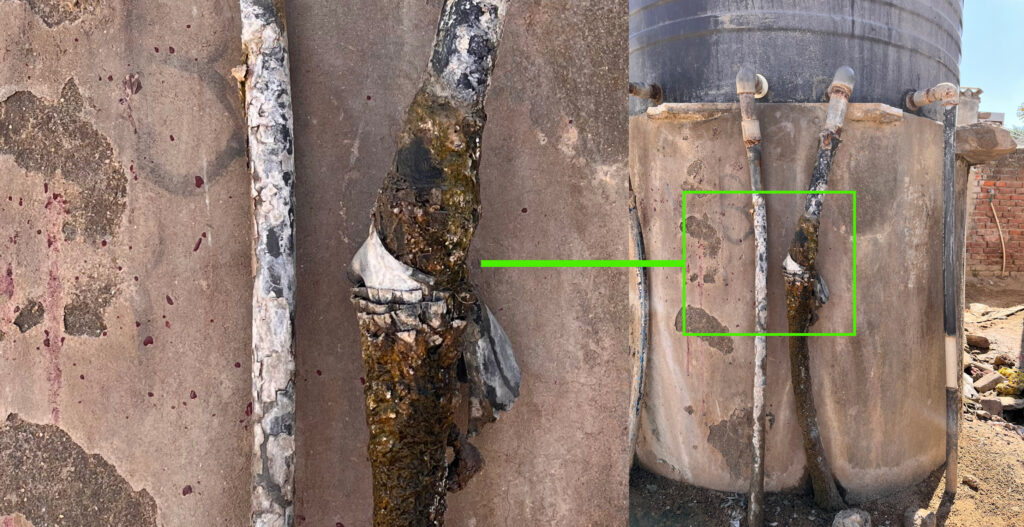
They don’t have enough water to irrigate their farms and have consumed contaminated water for the past 30 years. This situation was entirely different 30 years ago when the rivers had clean water, and rainfall was sufficient for their agricultural practices. Man against nature was extremely prevalent in these areas, resulting in the current conditions. Daily lives impact water that exist around us. There is always a lack of water sewage disposal in villages.
That combined with industrial affluents that have been adding to the overall contamination has made the situation of water scarcity even worse than before. Every family I came across during my visits had at least one bedridden member due to many years of consuming contaminated drinking water. Due to a lack of local water sources, people started installing borewells, which depleted the groundwater. As much as a borewell seems like a good solution to their drinking needs, the water they get from it is not potable due to high fluoride contamination.
Research on Fluoride
The research on fluoride levels in groundwater in the areas of rural Rajasthan mentions the consequence of the geogenic origin of fluoride due to natural underground weathering processes. Excess amounts of fluoride ions in drinking water can cause dental fluorosis, skeletal fluorosis, arthritis, bone damage, osteoporosis, muscular damage, fatigue, joint-related problems, and chronicle issues.3 Many of these issues were observed during the I time spent around the community and a lot of information about these health issues were also gathered from local clinics mentioning the most common diseases to be kidney stones and joint pain.
Solutions On The Horizon: Initiatives By Tarun Bharat Sangh
Working with Tarun Bharat Sangh, I had an opportunity to do a case study on ten families living in Kalwada, Bhamboriya and Nevta Panchayat who got farm pond and water tanks4 built for themselves through the joint initiative of Tarun Bharat Sangh and its CSR partner Mahindra World City, Jaipur.

The Dilemma Of Choice: Farm Ponds vs. Water Tanks
We visited the house of Manbhar Devi, who had her Water Tank built through the collaborative model of Tarun Bharat Sangh. In this collaborative process some parts like providing construction materials are handled by the organisation and people contribute in the form of voluntary labour (shram daan) getting the ground excavated. The percentage division of work is either 25-70 in the case of a water tank and 50-50 in the case of a farm pond.
The people contribute either monetarily for digging the ground and labor costs, or through voluntary labor, where family members work on the sites themselves. Manbhar Devi’s husband Bhairu Lal offered us water. The mug he gave us had fluoride deposits in it. He said with a straight face, “do ghoont paani pi lo, shaam tak dast lag javla” (take two sips, enough to give you diarrhoea)
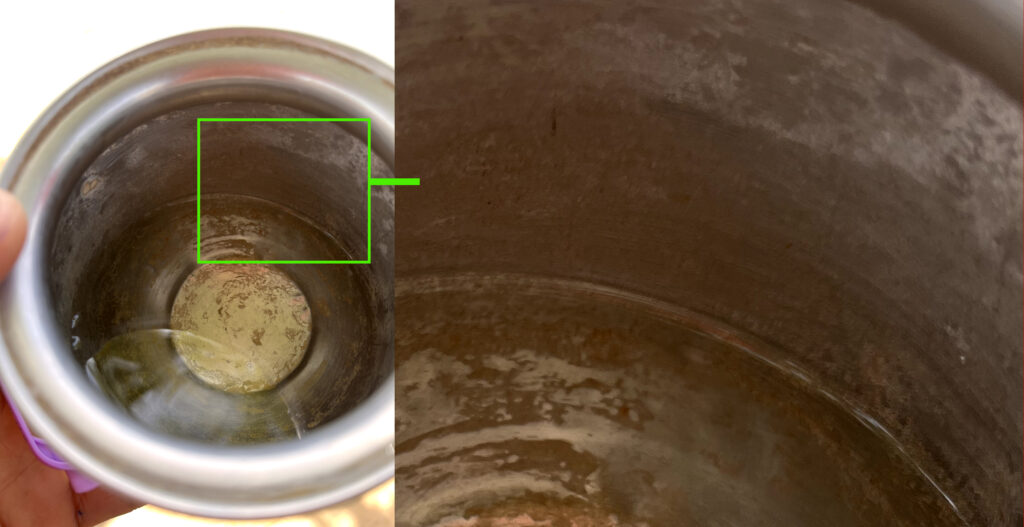
His words highlights the scale of the problem faced by not just his family but also numerous others residing in villages under Kalwada Panchayat, a prime example of rural Rajasthan’s water crisis.
Individual Struggles: Personal Narratives
Prem Devi, residing in a village named Bairwon ki Dhani in Kalwada Panchayat, single-handedly supports her family by raising goats. She also owns 12 bigha of land that remains arid due to irregular rainfall patterns and contaminated local water sources. Her husband died 25 years ago, thereby leaving her to take care of four young kids, a son and three daughters. After this, Prem Devi had to do everything alone. From farming her land and taking care of her children to enduring the struggles that come with agriculture.
This region has severe water scarcity issues as well. Some years would be good in comparison to others if it would rain. However, cultivating land, relying on irregular rainfall, facing risks around farming different crop types, and then managing her family all alone .Last year, she incurred heavy losses due to her crops not maturing properly. This was a direct consequence of the lack of local water sources for irrigation, inadequate rainfall, and high temperatures in the region.
When asked what she could produce in the past before the construction of her farm pond, she replied, “2-5 bori bajra toh uga levan cha, chokhi baarish ho jave toh 15 bhi ho jave chh” (even with little rainfall, I could harvest 2-5 bags of bajra, but with good rainfall, it could go up to 15 bags). This was only from a small part of her farmland that she could irrigate. Ideally, if she gets enough water to cultivate 12 bigha of her farmland, at full efficiency, it can produce around 50-55 bags (each bag is 100 kg) of farm produce which also generates fodder. In such a scenario, Prem Devi can multiply her family income manifold if only she could transform the barren land, which is not cultivable.
Challenges And Adaptations
Prem Devi and her family had adjusted to the problems they faced in rural Rajasthan’s water crisis, however after getting a farm pond, she can now utilise all three cropping seasons to increase her annual income, but she and her family still consume contaminated drinking water which she hopes will now stop once she starts making more money from farming and utilising extra profits for good quality of water which she can order from local water suppliers.
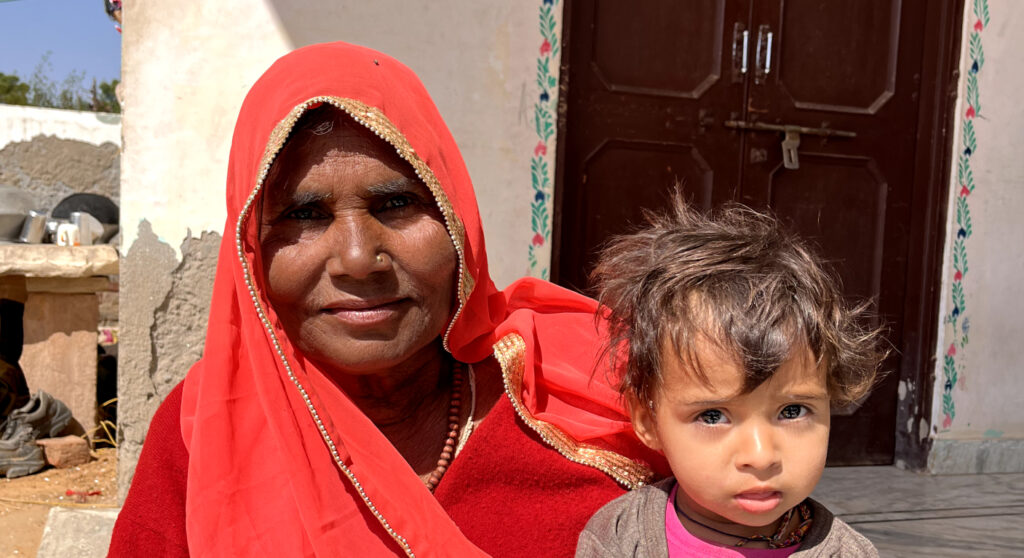
Observing Resource Allocation
Many families in and around the three panchayats mentioned initially are opting for both a water tank and a farm pond. Talk about economic diversity which appears to be more prominent in cities however here in these panchayats one can visually identify who is more privileged than the other, just by the resources. A good idea about resource allocation and sharing can be grasped from multiple stories from the communities.I came across one such community through India Fellow’s social leadership program. Good thing is that a lot of such stories are published at a single platform which all of us can refer to while thinking about our society in general.
Now let’s quickly get back to the original idea of this blog which is about rural Rajasthan’s water crisis and the three panchayats that I visited.The sarpanch of Bhamboriya had a model size farm pond built for himself, boasting such a huge volume that once filled, it can easily last multiple agricultural seasons without relying on rainfall for refilling.
Analyzing Community Dynamics
Now whether the sarpanch is going to share this resource with the neighbouring small-scale farmers is a question I have not asked. However I do remember the story which Prem Lal of Bairwon Ki Dani told me. Bairwon Ki Dani is the same village where Prem Devi lives who also happens to be Prem Lal’s neighbour. Prem Devi and Prem Lal are part of the ‘Bairawa’ community which lives in this village and belongs to the scheduled caste.
Prem Lal told me about this time a few years back there was an acute shortage of drinking water. None of the neighbouring villages would offer help to the people of Bairwon ki Dani. At that time, women from this village gathered together, pooled the money, whatever they could manage and ordered water tankers for the entire community.
Whether such collaboration and pooling of resources is possible when it comes to getting a farm pond as a local water source for multiple farmer families is a question of scale but at least some communities do tend towards resource sharing during extreme adversities whereas some would stick to their closed groups and keep their resources central towards their utilities amidst the massive water crisis.
Coping Mechanisms: Seeking Solutions
For Durga Lal who lives in Ganatpura, another village in Kalwada Panchayat, getting a water tank was of primary concern because of his two young sons and a one-year-old granddaughter. Durga Lal’s father is bedridden and has been suffering from severe itching for the last 20 years. He doesn’t want other members of his family to develop similar medical conditions hence he opts for a water tank, compromising his livelihood position.
Conclusion: Reflecting On The Journey
These people have limited livelihood options where most work as informal labourers or on farms. Some farmers sold their land as land prices in the Kalwada region are very high with a bigha fetching as much as Rs 3 crores. However, they have lived with these problems for so long now that they sound so casual while explaining the same. They have compromised with their situation and have been consuming the same contaminated water for the last thirty years.
The explanation alone doesn’t fully convey the severity of their problems unless one experiences them firsthand. Simply visiting and tasting the water they consume for a day might not result in immediate sickness. But it can help highlight the underlying cause of all the health issues in these villages.
In an area where people face water issues that impede their agriculture and putrefy their bodies, the question of whether one would opt for a farm pond for agriculture and keep consuming contaminated water or get a water tank built and rely on irregular rainfall presents a challenging predicament. How they navigate these extreme challenges remains a question for contemplation, yet understanding them fully seems elusive.
- Bhawna Thakur, Vijay A. Loganathan, Anupma Sharma, Rakesh K. Sharma, Alison Parker,
Release of geogenic fluoride from contaminated soils of Rajasthan, India: Experiments and geochemical modeling ↩︎ - Shakir Ali, Yadolah Fakhri, Mehdi Golbini, Sachin Kumar Thakur, Abdolazim Alinejad, Iman Parseh, Shashank Shekhar, Prosun Bhattacharya,
Concentration of fluoride in groundwater of India: A systematic review, meta-analysis and risk assessment,
Groundwater for Sustainable Development ↩︎ - Solanki YS, Agarwal M, Gupta AB, Gupta S, Shukla P.
Fluoride occurrences, health problems, detection, and remediation methods for drinking water: A comprehensive review. ↩︎ - What are farm ponds and water tanks?
Farm ponds serve for farming activities and recharge through rainwater harvesting and local water sources. On the other hand, a water tank functions as localized storage reservoirs for drinking water, addressing accessibility issues and acting as sustainable sources of drinking water by collecting rainwater. ↩︎

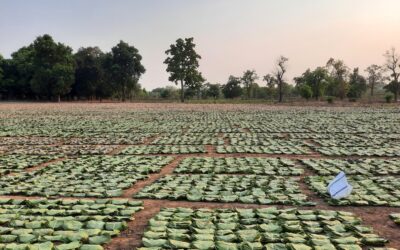
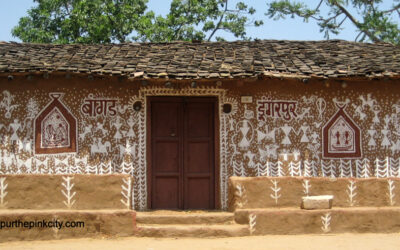
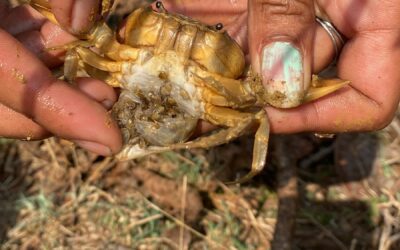
0 Comments